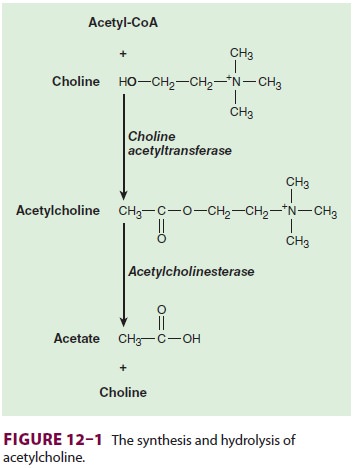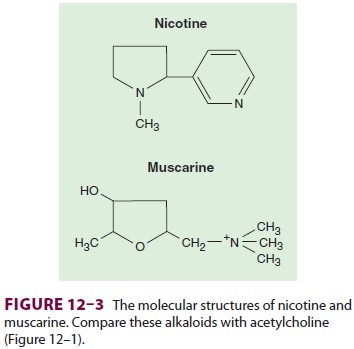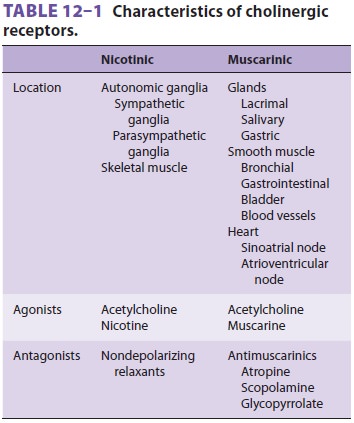Chapter: Clinical Anesthesiology: Clinical Pharmacology: Cholinesterase Inhibitors & Other Pharmacologic Antagonists to Neuromuscular Blocking Agents
Cholinergic Pharmacology
Cholinergic Pharmacology
The term cholinergic refers to the
effects of the neu-rotransmitter acetylcholine,
as opposed to the adren-ergic effects of noradrenaline
(norepinephrine). Acetylcholine is synthesized in the nerve terminal by the
enzyme cholineacetyltransferase, which cata-lyzes the reaction between
acetylcoenzyme A and choline (Figure 12–1). After its release,
acetylcho-line is rapidly hydrolyzed by acetylcholinesterase (true
cholinesterase) into acetate and choline. Acetylcholine is the neurotransmitter
for the entire parasympathetic nervous system (parasympathetic ganglions and
effector cells), parts of the sympathetic nervous system (sympathetic
gan-glions, adrenal medulla, and sweat glands), some neurons in the central
nervous system, and somatic nerves innervating skeletal muscle (Figure 12–2).


Cholinergic receptors have been
subdivided into two major groups based on their reaction to the alkaloids
muscarine and nicotine (Figure 12–3). Nicotine stimulates the
autonomic ganglia and skel-etal muscle receptors (nicotinic receptors), whereas
muscarine activates end-organ effector cells in

bronchial smooth muscle, salivary
glands, and the sinoatrial node (muscarinic receptors). The central nervous
system has both nicotinic and muscarinic receptors. Nicotinic receptors are
blocked by mus-cle relaxants (also called neuromuscular blockers), and
muscarinic receptors are blocked by anticho-linergic drugs, such as atropine.
Although nicotinic and muscarinic receptors differ in their response to some
agonists (eg, nicotine, muscarine) and some antagonists (eg, vecuronium vs
atropine), they both respond to acetylcholine ( Table 12–1). Clinically
available cholinergic agonists resist hydrolysis by cholinesterase.
Methacholine and bethanechol are primarily muscarinic agonists, whereas
carbachol has both muscarinic and nicotinic agonist activi-ties. Methacholine
by inhalation has been used as a provocative test in asthma, bethanechol is
used for bladder atony, and carbachol may be used topically for wide-angle
glaucoma.
When reversing neuromuscular blockade,
the primary goal is to maximize nicotinic transmission with a minimum of
muscarinic side effects.

Related Topics